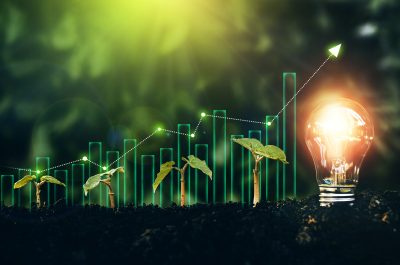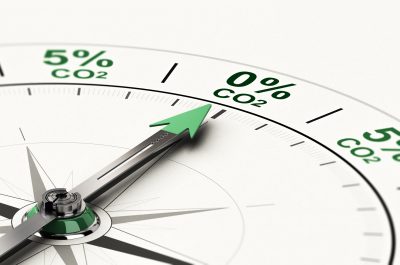Walking the walk: State budgets set the pace for the energy transition
The New South Wales (NSW) and Queensland (QLD) state budgets have been handed down within a the space of a week, with both including significant funding for the energy transition. Both approaches show a commitment to the transition to renewables and storage and meeting interim and ultimate emissions goals, while also being tailored to the energy market context and structure in each state.
We take a look at the announced expenditure and key takeaways for the energy sector, as well as highlighting the role of ‘local renewable energy zones’ embedded within the distribution grid and pioneered under this QLD budget.
Key NSW budget initiatives
The 2024 NSW budget focused principally on investment to address housing shortages, facilitate the energy transition, and focusing broadly on the ‘must haves’ rather than the ‘nice to haves’ due to the reduced forecast revenue driven principally by the reduced share of GST revenue allocated to NSW.
For the energy transition, the NSW budget includes:
- $128.5 million over two years to upgrade roads and infrastructure between the Port of Newcastle and Renewable Energy Zones to enable the transport of critical components for renewable energy infrastructure
- $39.3 million over seven years to accelerate biodiversity assessments for renewable energy and housing projects
- $1 billion for the NSW Energy Security Corporation to accelerate private sector investment in clean energy projects
- $3.1 billion to help deliver Renewable Energy Zones in NSW
- $15.8 million to make the NSW energy system safer, more reliable and better equipped to manage an increase in the number of households investing in energy savings technologies
- $435.4 million in 2024/5, including a boost of $100 million, to increase the value of energy bill rebates to assist households with the cost of living (in addition to the federal government’s $300 energy bill relief payments) and $10 million for a pilot program to provide debt relief for people in critical need, and
- $238.9 million in the 2024/5 budget for the forthcoming Consumer Energy Strategy.
Key QLD budget initiatives
The 2024 QLD budget focused principally on infrastructure to support the energy transition and economic development through the Queensland Energy and Jobs Plan (QEJP), infrastructure to support the delivery of the Brisbane Olympics in 2032, and support to ease cost of living pressures. The QLD budget includes over $26 billion for the QEJP and the energy transition, including:
- $16.5 billion for renewable energy and storage projects, including two large-scale pumped hydro projects in regional QLD and 22 GW of new renewable energy generation
- $8.5 billion for transmission infrastructure, including CopperString 2032, SuperGrid and renewable energy zone transmission works
- $500 million for distribution network storage, including Energy Queensland’s (EQL’s) Local Network Battery Plan and Local Renewable Energy Zone Pilot Projects
- $192 million for Powerlink to develop Transmission and Training Hubs in Townsville and Gladstone, and
- From 1 July 2024, all QLD households will receive $1000 off their energy bills in 2024–25, funded by coal royalties, and appearing as the ‘Queensland Government Cost of Living Rebate’ on energy bills (in addition to the federal government’s $300 energy bill relief payments).
QLD local renewable energy zones
Renewable Energy Zones, or REZs for short, are sometimes referred to as the modern-day equivalent of a power station – they combine renewable generation (such as solar and wind), storage (such as batteries) and the network infrastructure, the poles and wires, connecting it all.
You’re likely to have heard of REZs in the context of large-scale, transmission-connected infrastructure projects, that are designed to solve the challenge of coordinating the investor commitment to build transmission infrastructure together with multiple renewable generators. While these large-scale REZs are critically important to the transition, we can also leverage existing capacity on our distribution grid to roll out a similar concept, on a smaller scale and at faster speed.
The Queensland Government has announced (alongside its budget commitments) a Local Renewable Energy Zone (LREZ) in Caloundra, which will help the local community generate more renewable energy, store it, and then use it when its needed most. This LREZ will largely use electricity infrastructure that already exists on the distribution grid.
As noted by the QLD Premier “LREZs will maximise the use of existing network infrastructure and batteries to produce, store, share, and use renewable energy locally”.
The pilot project will see the deployment of 8.4 MW/18.8 MWh of battery storage and support up to an additional 2.8 MW of solar PV and 0.9 MW of demand management. Importantly, by utilising distribution-connected batteries, it allows the benefits of renewable energy to be shared amongst all energy customers, not just those that have solar.
As we tap into the opportunities that the distribution grid can offer to the energy transition, and further develop and implement LREZs, we will likely find that there is no ‘one size fits all’ solution. In fact, multiple types of LREZ are possible depending on the local grid and load circumstances, with examples including:
- A semi-urban LREZ focused on commercial and industrial customers and their ability to host solar and storage
- A local / suburban LREZ with the need to coordinate a high residential CER penetration, or
- A regional LREZ with agricultural/industrial load and readily available sub-transmission capacity for hosting larger generation and storage projects
Unlocking these types of opportunities on our distribution grid, whether they are LREZs or distribution-connected batteries, will help secure a deliverable path to 82% renewables by 2030 and will benefit energy consumers over the long term.
Key takeaways
It is clear that both the NSW and QLD Governments are leaning into an energy transition led by renewable generation, energy storage, and the network infrastructure to support it. It is great to see innovative concepts such as the LREZ being further developed to make the most of the infrastructure that we already have.
One stark difference between the two budgets is the scale of the expenditure. The QEJP is some $26 billion over four years, while the NSW energy transition expenditure is closer to $4 billion. This huge difference is accounted for by the ownership structure of the energy system in the respective jurisdictions, which influences the approach to the new infrastructure development. In QLD, government-owned corporates are leading the infrastructure rollout, while in NSW the approach is to provide government leadership and incentives to unlock private investment.
Ultimately, the direction in each state is the same. A commitment to an energy transition led by renewables and firmed by storage and gas. It is critical at this time to have broad support for the direction of the transition, with uncertainty adding risk, and therefore cost, for energy customers.


